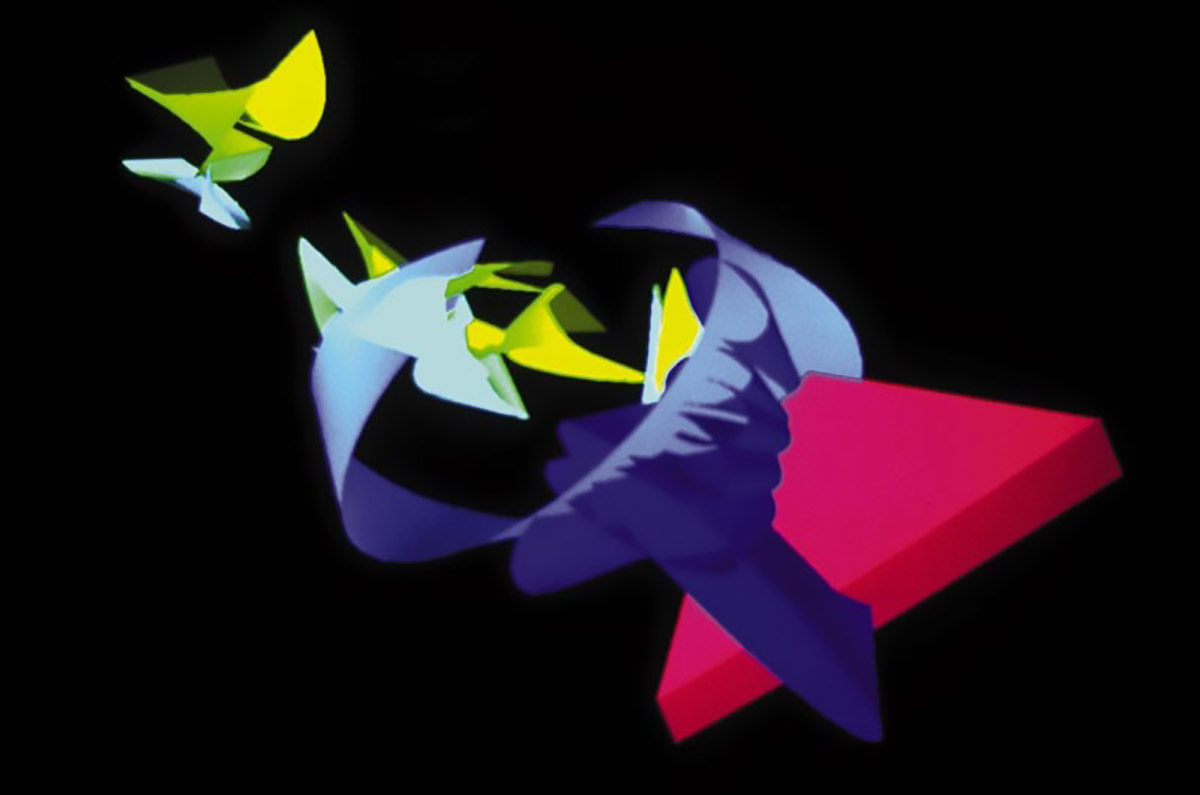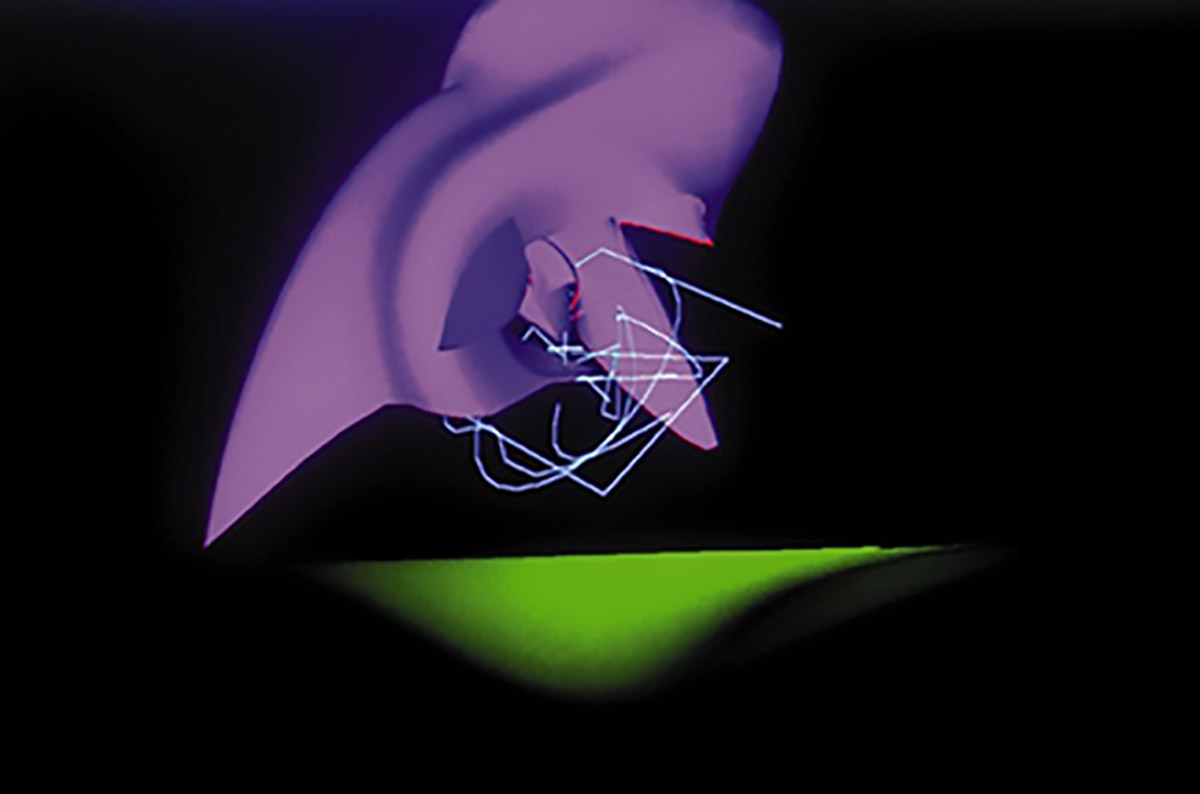
Artificial Intuition
Intuitive computer sketches exploit the mutant potency of the program. Nothing seems to be more contradictory than making a computer sketch. A sketch is intuitive by definition, while the computer is thought to be a logical instrument. Language may help to describe an intuitive idea. Thus logic and intuition may be compatible by means of computer language. The sketch cannot be predicted, neither by its designer (the visual artist) nor by means of a pre-programmed step in the computer program. The designer builds up his energy and discharges it in a series of mouse movements, becoming visible in digital space. The spatial sketch can now be observed from all sides in space. A number of perspectives are selected through the autonomous. Highly subjective judgment of the designer. They may be printed or photographed and serve as graphic (ie two-dimensional) starting-points for a three-dimensional object. The space is first flattened and then stretched out again into the third dimension. In the transition from spatial computer sketch to object there are several leaps from third to second dimension and vice versa, like an electron changing course when electricity moves through metal. Artists and architects are able to use the mutant force of artificial intuition. Embedded in the digital space of the computer.

Workshop team: Ilona Lénárd, Kas Oosterhuis, Mark Hoevenaars, Jaques Firing | Gallery Aedes Berlin | supported by Intergraph computers | 1990